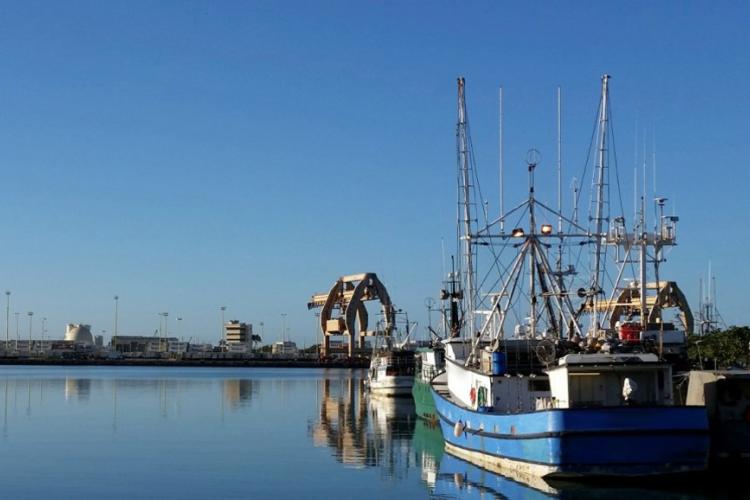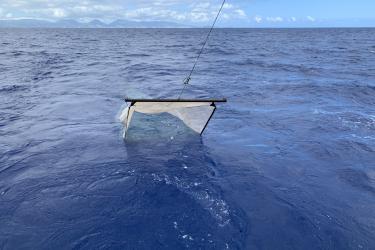Managing bigeye tuna in the Pacific is easy, right? Just estimate how many fish are out there swimming around at high speeds, calculate a sustainable amount to harvest, set a catch limit, and enforce it. Then the industry goes fishing, delivers to market, eat, repeat. Bigeye makes delicious sashimi – yum!
Well, turns out managing bigeye tuna is not very easy at all.
In the Pacific Ocean, where 60% of the world’s bigeye tuna (Thunnus obesus, Scombridae) are caught, there are limits to the amount that the longline fishery can catch (and keep) each year. These annual catch limits (also called “quotas”) are set by current stock assessments and multilateral negotiations among dozens of countries during meetings of two regional fisheries management organizations: the Western and Central Pacific Fisheries Commission (WCPFC) in the Western and Central Pacific Ocean and the Inter-American Tropical Tuna Commission (IATTC) in the Eastern Pacific Ocean. Once the member nations agree upon the limits, it’s up to each nation to enforce them at home, along with any additional regulations set at the national level. In other words, to conserve bigeye tuna, a bunch of nations need to work together and agree upon rules that are not necessarily in their own best interest. That way, these fish are still swimming around for future generations. Oh, and maybe some countries need a few more rules. That’s pretty simple, right?
Nope, it’s going to get a little more complicated.

Map of the Pacific Ocean divided by jurisdictional RFMO lines. The darker blue area is under both WCPFC and IATTC jurisdiction. Orange dots represent jurisdiction of the Western Pacific Regional Fishery Management Council.
Since 2009, Hawai‘i’s longline fleet has been subject to WCPFC quota reductions for bigeye tuna. These decreases have coincided with increases in catch-per-unit of effort, number of active fishing vessels, bigeye tuna catch, and catch value, which exceeded $70 million in 2015 alone. Wait, reductions have led to increases?
Yes, due to a couple of reasons: First, Hawai‘i’s smaller longline vessels (shorter than 24 meters, about 79 feet) have shifted effort from the WCPFC Area to the IATTC Area, a productive area 800 km (about 500 miles) east of Honolulu that is relatively free of international competition–and–is a quota-free zone for vessels shorter than 24 meters. Second, U.S. Territories are allowed to share their unused quota with Hawai‘i longliners (up to 1000 metric tons per year, subject to stipulations in the Western Pacific Regional Fishery Management Council’s Pelagics Ecosystem Plan). In return for the quota, a group representing the Hawai‘i longliners makes a negotiated payment to that Territory’s sustainable fishing fund, which supports fisheries development projects in those areas.
So, despite the quota reductions, the industry is doing pretty well, right? Not exactly.

‘Ahi (bigeye tuna) await wholesale bids in the early morning hours of the United Fishing Agency fish auction in Honolulu, Hawai‘i, the only fresh tuna auction in the United States (Photo credit: NOAA Fisheries/Adam Ayers).
Fishing vessels of various ages and sizes make up the Hawai‘i longline fleet. When the fishery is forecasted to reach a catch limit, NOAA Fisheries posts a Federal Register Notice to close the fishery. To transfer quota, NOAA Fisheries must conduct a rulemaking and public comment, and many times this resulted in a period of time when the fishery remained closed until the quota transfer was put into effect. Yet, certain rules allow smaller vessels (no longer than 24 meters) or vessels with multiple permits to fish during a WCPFC or IATTC fishery closure prior to a transfer agreement. These vessels are therefore able to capitalize on favorable market conditions for one to two months per year, when about a quarter of the fleet are unable to land (bring to shore), transship (transfer to another vessel at sea), or retain bigeye tuna. We analyzed the effects of these closures on the Hawai‘i longline fleet between 2010 and 2015.
Our analysis revealed that longlining vessels fishing during closures spent nearly two more non-fishing days at sea than vessels fishing during the same month in years without a closure––with no significant difference in trip length. These vessels were burning more fuel, but fishing less during these trips. Further, average quarterly trip costs were the highest during fishery closures.
We also interviewed 28 captains, vessel owners, owner-operators, and crew in the fall of 2015. They had a keen awareness of the issues impacting their industry. They also listed several clever solutions that they could achieve as a group, without any government intervention, that would greatly improve their economic and regulatory situation. These solutions included reducing the length of fishing trips for an even fresher product, improving marketing to increase the value and perception of their prestigious product, and timing the market through coordinated effort and cooperation throughout the year.
Well, if they have all the answers, then why haven’t they done it already?
To achieve these solutions, the Hawai‘i longline industry, which includes 150 vessels and almost 600 members, would need to cooperate as a group–just like the member nations when they first agreed upon bigeye tuna quota reductions in 2009. There’s also this thing called the “collective action problem,” which complicates these kinds of agreements. The collective action problem occurs when a group would benefit from working together, but the costs prevent an individual from doing so on their own. There are plenty of examples, however, where individuals have overcome the collective action problem by working together.
Managing bigeye tuna is complex for a number of scientific reasons, but ultimately because of the human dimension of the fishery. Bigeye tuna management requires cooperation – at both international and domestic levels, and within a diverse fishing fleet.
Read more: “Bigeye tuna catch limits lead to differential impacts for Hawai`i longliners” (published in Marine Policy).
Meet the Blogger

Adam Ayers is a Social Scientist with the Joint Institute of Marine and Atmospheric Research and the Pacific Islands Fisheries Science Center. He received his B.S. in Computer Science and M.P.A. from the University of North Carolina at Wilmington. He earned his Ph.D. in Urban and Regional Planning from the University of Hawai‘i at Mānoa. When he’s not thinking about eating bigeye sashimi, Adam spends his time in the ocean around the island of O‘ahu.



